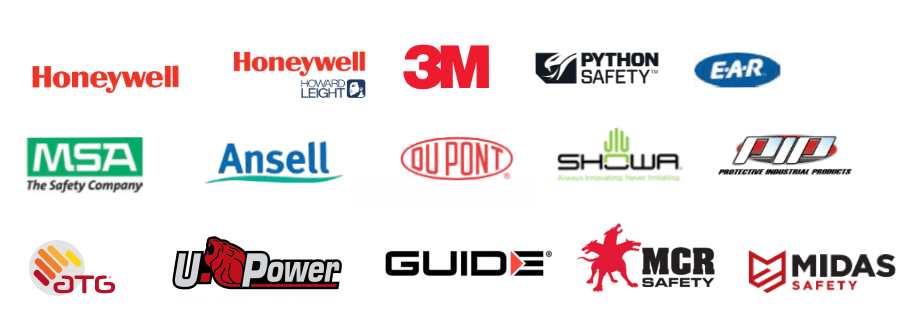
Personal Protective Equipment (PPE) plays a vital role in safeguarding individuals from workplace hazards. From healthcare workers battling pandemics to construction workers operating in risky environments, the importance of high-quality PPE cannot be overstated. In this article, we delve into some of the most prominent PPE brands worldwide, addressing critical questions about the industry's leaders and innovations.
What is the best PPE brand?
When it comes to identifying the "best" PPE brand, it largely depends on the specific industry and requirements. However, a few names consistently stand out for their quality, reliability, and innovation:
-
3M: Known globally for its innovation, 3M produces a wide array of PPE, including respirators, hearing protection, and safety eyewear. Its N95 respirators gained significant attention during the COVID-19 pandemic.
-
Honeywell: A leader in safety solutions, Honeywell offers products ranging from industrial-grade gloves to advanced respiratory protection systems. Their focus on integrating technology into safety equipment is noteworthy.
-
Ansell: Specializing in hand and body protection, Ansell's gloves and protective suits are widely used in industries such as healthcare, manufacturing, and chemical processing.
-
MSA Safety: Renowned for its head protection and gas detection systems, MSA Safety is a preferred choice in the mining, oil, and construction sectors.
-
DuPont: Famous for its Tyvek and Kevlar materials, DuPont offers high-performance protective suits and flame-resistant clothing, catering to industries where chemical and thermal risks are prevalent.
These brands have built their reputations over decades by delivering products that exceed safety standards and meet the evolving needs of their customers.
Who is the biggest manufacturer of PPE?
Determining the largest PPE manufacturer depends on the metric used (e.g., revenue, production volume, or market share). However, some key players dominate the global PPE market:
-
3M: As one of the world's largest manufacturers of PPE, 3M is a significant player in sectors like healthcare, construction, and manufacturing. Its extensive product line and global reach make it a market leader.
-
Honeywell: With operations spanning over 70 countries, Honeywell is another giant in the PPE industry. Their investments in research and development have solidified their position as a top-tier manufacturer.
-
Ansell: Although it specializes primarily in hand protection, Ansell's global footprint and diversified offerings make it a significant contender in the PPE space.
-
Kimberly-Clark Professional: Known for disposable PPE, such as gloves and masks, Kimberly-Clark has a substantial presence in the healthcare and industrial sectors.
-
Top Glove Corporation: Based in Malaysia, Top Glove is the world's largest manufacturer of gloves, producing billions of units annually for global markets.
These manufacturers have been instrumental in addressing global PPE demands, particularly during crises like the COVID-19 pandemic.
Who are the smart PPE manufacturers?
The emergence of smart PPE has revolutionized workplace safety. Integrating advanced technologies, such as sensors and IoT, smart PPE enhances functionality and ensures better protection. Key players in this niche include:
-
Honeywell: Honeywell's smart helmets and connected safety systems monitor worker health and environmental conditions in real-time, providing actionable insights to prevent accidents.
-
MSA Safety: The company’s smart PPE offerings include wearable gas detectors and helmets equipped with communication devices, catering to industries with high-risk environments.
-
Uvex Group: Uvex combines traditional PPE with cutting-edge technology, offering products like smart safety glasses with augmented reality capabilities.
-
Dräger: Focused on respiratory protection, Dräger’s smart solutions include systems that monitor air quality and breathing performance for workers in hazardous industries.
-
Guardhat: This company specializes in connected safety solutions, such as smart helmets that provide location tracking, real-time alerts, and communication features.
The innovation in smart PPE not only ensures compliance with safety standards but also empowers organizations with data-driven decision-making to enhance worker safety.
What is the most commonly used PPE?
The type of PPE most commonly used varies across industries, but a few items are universally recognized and widely adopted:
-
Respirators and Masks: N95 respirators and surgical masks are staples in healthcare settings and during public health crises.
-
Gloves: Disposable gloves made of latex, nitrile, or vinyl are essential in healthcare, food handling, and laboratories.
-
Hard Hats: Commonly used in construction and industrial sectors, hard hats protect workers from head injuries.
-
Safety Glasses and Goggles: These protect eyes from flying debris, chemical splashes, and other hazards, making them indispensable in manufacturing and laboratory work.
-
Protective Clothing: High-visibility vests, flame-resistant suits, and chemical-resistant clothing are widely used in industries ranging from logistics to chemical processing.
-
Ear Protection: Earplugs and earmuffs are crucial in environments with high noise levels, such as factories and construction sites.
-
Foot Protection: Safety boots with steel toes and anti-slip soles are essential for workers in construction, mining, and other physically demanding jobs.
Each piece of PPE is designed to mitigate specific risks, ensuring that workers can perform their duties safely and efficiently.
The world of protective equipment is vast, with numerous brands leading the charge in innovation, quality, and reliability. Whether it's traditional PPE or smart, tech-enabled solutions, these products continue to play a crucial role in safeguarding lives across industries. By understanding the key players and their offerings, organizations can make informed choices to ensure optimal safety for their workers.
